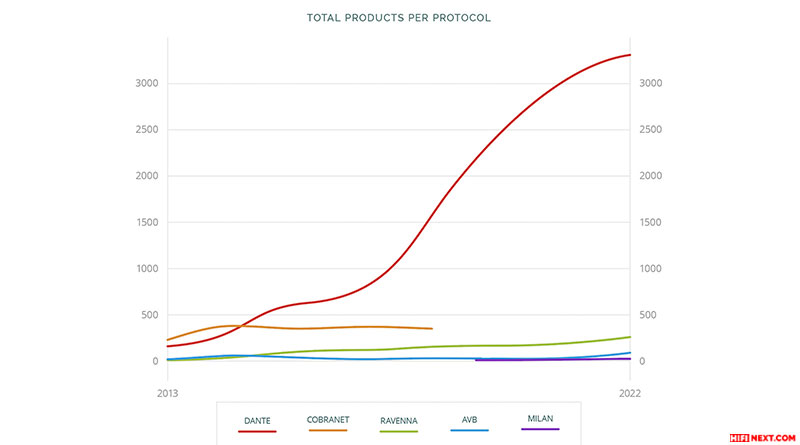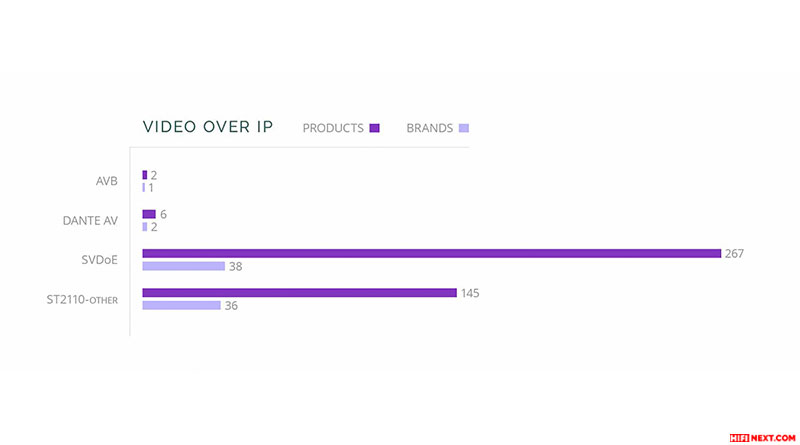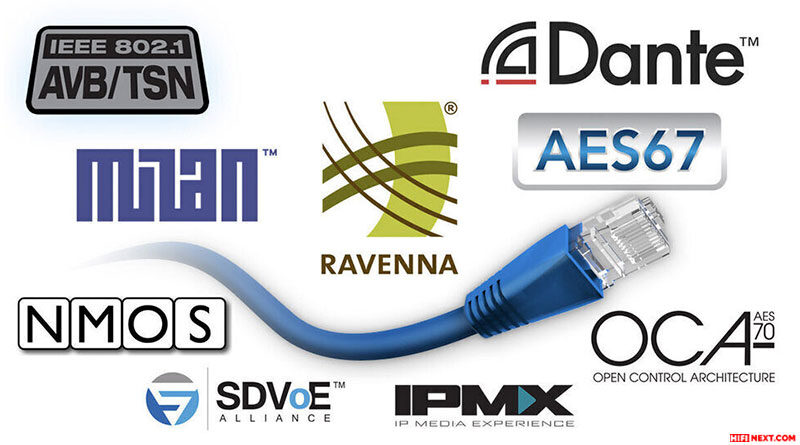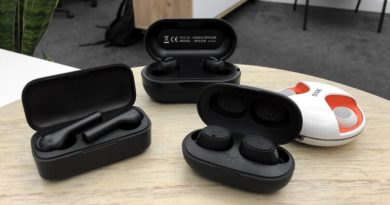RH Consulting Report: Dante is the leader among network audio products
RH Consulting, an expert in audio and video networking, has released another report on the state of the profile market. These reports have been published almost annually since 2013. In addition to audio technologies, the tenth anniversary study also included video transmission systems.
Author, consultant and RH Consulting leader Roland Hemming, said: “the last twelve months have seen a complete overhaul in the way RHC conducts its research and even closer collaboration with relevant industry trade associations and manufacturers. Consequently, the 10th edition of the report is the most comprehensive and accurate to date“.

In total, 4,142 network products from 444 manufacturers are currently on the market. Moreover, in the audio section, Dante technology is expected to lead – in terms of prevalence, it is ahead of its closest competitors by an order of magnitude. Second place went to Ravenna, remaining the number one protocol of choice in broadcasting.
Audinate technology is on the rise, with 472 new products introduced last year and now supported by 3,301 devices. Approximately 3,000 models are AES67 compatible, allowing them to also work with Dante, Ravenna and Livewire+ at the same time. Models with Dante, in turn, support AES67, although not all. Over the past year, there has been a proliferation of products such as ST2110-30 (AES67) and ST2110-31. They appear in the report for the first time.

When it comes to network video, Hamming thinks it’s pretty much the same as audio was 10 years ago: “The largest proportion of networked video products are simply interfaces to get other types of video signal on and off the network” the analyst said. “Interestingly, when we first started counting networked audio products in 2013, we reported a total of 428 devices. Ten years later we have counted almost exactly the same number – 420 to be precise – of networked video products. This is a fascinating comparison and will offer us an excellent opportunity to compare the growth curves of networked video against networked audio over the next few years.”




